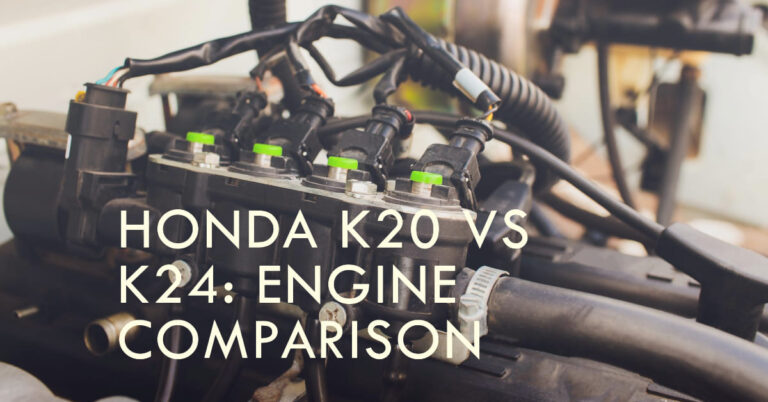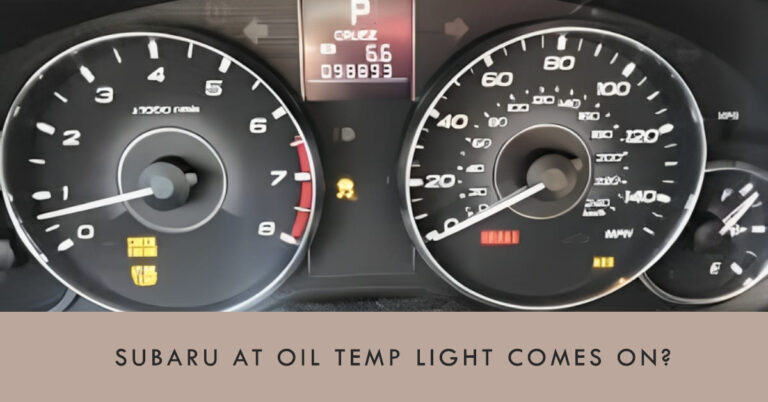What Is A Sealed Transmission? A Comprehensive Guide

A sealed transmission is a type of transmission that has been filled with oil during the manufacturing process and is not intended to be opened or worked on by the end user. The reason for sealing the transmission is twofold: first, it prevents tampering with the vehicle’s mechanical systems, and second, it helps ensure that there is enough oil in the transmission to keep it running smoothly.
While a sealed transmission may seem like a hassle to some, it actually has several benefits. For one, it eliminates the need for regular transmission fluid changes, which can save time and money. Additionally, because the transmission is sealed, there is less chance of contaminants getting in and causing damage to the transmission. However, it is still important to have the fluid checked periodically by a professional to ensure that it is still in good condition.
Table of Contents
What Is a Sealed Transmission?
Definition of a Sealed Transmission
A sealed transmission is a type of transmission that is filled with oil during the manufacturing process and is not intended to be opened or worked on by the end user. Unlike traditional transmissions, sealed transmissions do not have a dipstick or drain plug for checking or changing the transmission fluid. Instead, the fluid is designed to last the lifetime of the vehicle, and the transmission is sealed to prevent tampering with the mechanical systems.
How Does a Sealed Transmission Work?
Sealed transmissions work by using advanced engineering to create equipment that functions longer without necessarily redesigning the basic function. The oil used in a sealed transmission is designed to last the lifetime of the vehicle, and the transmission is sealed to prevent tampering with the mechanical systems. This helps to reduce the amount of “bad” transmission fluid being disposed of and can lead to significant cost savings over time.
Benefits of a Sealed Transmission
One of the primary benefits of a sealed transmission is the reduced maintenance requirements. Since the transmission fluid is designed to last the lifetime of the vehicle, there is no need for regular fluid changes. This can save time and money over the life of the vehicle. Additionally, sealed transmissions can help to reduce the amount of “bad” transmission fluid being disposed of, which is better for the environment.
However, there are some drawbacks to sealed transmissions. Since there is no dipstick or drain plug, checking the fluid level or changing the fluid can be a very technical task that requires specialized equipment. This means that most vehicle owners will need to take their vehicle to a professional mechanic to have the transmission fluid checked or changed. Additionally, if there is a problem with the transmission, it may be more difficult and expensive to repair than a traditional transmission.
Types of Sealed Transmissions
Continuously Variable Transmissions (CVT)
CVT is a type of sealed transmission that is becoming increasingly popular among vehicle manufacturers. It is designed to provide a seamless driving experience by eliminating the need for gear shifting. Instead, it uses a system of belts and pulleys to continuously vary the gear ratio, allowing the engine to operate at its most efficient level. This results in better fuel economy and smoother acceleration.
CVTs require special transmission fluid that is specifically designed for their unique design. Using the wrong type of fluid can damage the transmission and result in costly repairs. It is important to have the transmission fluid checked and changed regularly to ensure the longevity of the transmission.
Dual Clutch Transmissions (DCT)
DCT is a type of sealed transmission that uses two clutches to shift gears. One clutch controls the odd-numbered gears, while the other controls the even-numbered gears. This allows for faster and smoother gear changes than traditional automatic transmissions.
DCTs are often used in high-performance vehicles due to their ability to shift gears quickly and efficiently. However, they can be more expensive to repair than traditional automatic transmissions.
Automated Manual Transmissions (AMT)
AMT is a type of sealed transmission that combines the ease of use of an automatic transmission with the fuel efficiency of a manual transmission. It uses an electronic control unit to automatically engage and disengage the clutch and shift gears.
AMTs are becoming more common in entry-level vehicles due to their lower cost compared to other types of sealed transmissions. However, they can be less smooth in operation and may require more maintenance than other types of transmissions.
Maintenance of Sealed Transmissions
When to Change the Transmission Fluid
Sealed transmissions are designed to be maintenance-free, but they still require regular fluid changes. It is important to follow the manufacturer’s recommended maintenance schedule for your vehicle. Typically, the transmission fluid should be changed every 30,000 miles or so. However, this may vary depending on the make and model of your vehicle.
How to Check the Transmission Fluid Level
Checking the transmission fluid level on a sealed transmission can be tricky. Most sealed transmissions do not come with a dipstick, so it can be difficult to determine the fluid level. However, it is still possible to check the transmission fluid level with the help of a professional mechanic. They will need to lift the vehicle off the ground and access the transmission through a special port.
Common Sealed Transmission Problems
Sealed transmissions are generally reliable, but they can still experience problems over time. Some common issues include overheating, leaks, and shifting problems. Overheating can be caused by a lack of proper fluid levels or a malfunctioning cooling system. Leaks can occur due to worn seals or damaged components. Shifting problems can be caused by a variety of issues, including worn clutch plates or a faulty solenoid.
Conclusion
In conclusion, a sealed transmission is a type of transmission that does not have a dipstick for checking the fluid level. Instead, the fluid is sealed inside the transmission and is supposed to last the lifetime of the vehicle. However, this does not mean that the transmission fluid never needs to be checked or changed.
While a sealed transmission may seem like a hassle, it actually has several benefits. For one, it helps to prevent contamination of the transmission fluid, which can cause damage to the transmission over time. Additionally, a sealed transmission can help to reduce the amount of maintenance that is required on the vehicle, as there are fewer parts that need to be checked and replaced.
That being said, it is important to keep in mind that a sealed transmission is not infallible. It is still possible for the transmission to develop problems over time, and it is important to have it checked by a qualified mechanic if you suspect that there may be an issue.
By following the manufacturer’s recommended maintenance schedule and keeping an eye out for any signs of trouble, you can help to ensure that your vehicle’s sealed transmission lasts for as long as possible. And if you do need to have the transmission serviced or repaired, be sure to take it to a reputable mechanic who has experience working with sealed transmissions.
FAQs
Can you change the fluid in a sealed transmission?
Yes, you can change the fluid in a sealed transmission. Although the name may suggest otherwise, a sealed transmission doesn’t mean an inaccessible transmission. However, the process of changing the fluid in a sealed transmission may be a bit more complicated than in a regular transmission. Your local mechanic can check the fluid of a sealed transmission, but the vehicle will likely need to be lifted off the ground to do so.
How long does a sealed transmission last?
A sealed transmission can last for 150,000 miles or even more. The components of a sealed transmission continue to work longer than those in regular transmissions because they don’t release any bad fluid. However, the lifespan of a sealed transmission also depends on how well it’s maintained, the quality of the fluid, and the driving conditions.
What are the signs of a failing sealed transmission?
The signs of a failing sealed transmission are similar to those of a regular transmission. Poor transmission fluid quality will usually lead to the following signs:
The sound of gears grinding when driving or switching gears.
Delayed engagement of the gears, such as when placing the vehicle in “reverse.”
Delayed shifting of the gears when accelerating, i.e., the engine revs without increasing in speed.
Can a sealed transmission be repaired?
Yes, a sealed transmission can be repaired. The first step in repairing a sealed transmission is to fill it with new fluid. Make sure that you are using the correct type of fluid for your vehicle, and make sure you have enough fluid in the bottle. Fill the transmission until it is full, then replace the cap on the fill port. However, if the damage is severe, it may be more cost-effective to replace the entire transmission.







